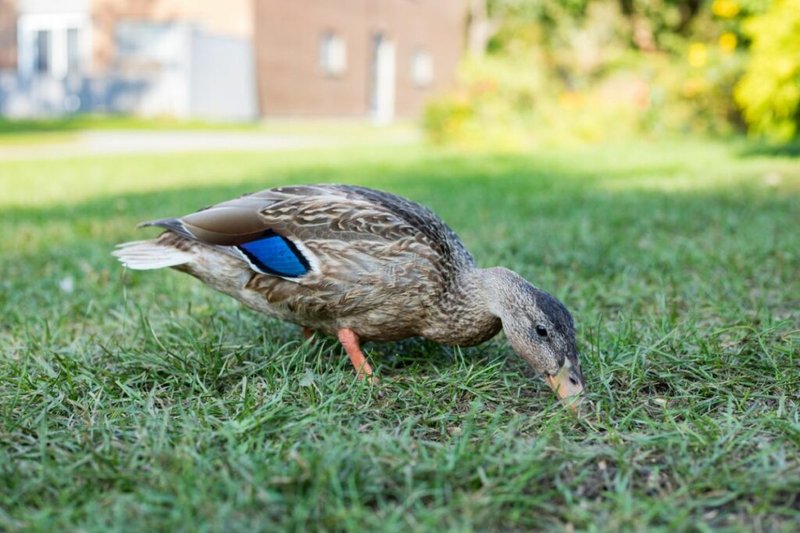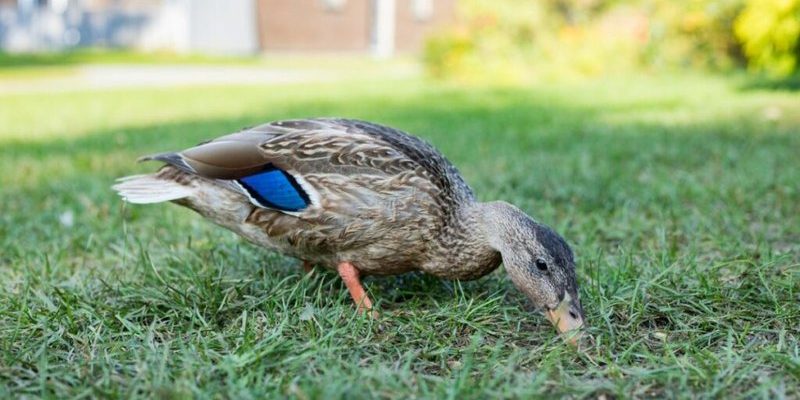
Ducks are fascinating creatures with a diverse menu that varies by species, habitat, and season. Some chow down on plants, while others enjoy a little protein in the form of insects or small fish. Understanding what these feathered foragers eat can give you insight into their behavior and even help you identify different duck species while enjoying an afternoon by the water.
What Do Ducks Eat?
Ducks have an incredibly varied diet, which largely depends on their environment. Depending on whether they’re dabbling or diving, their meals can include:
- Aquatic plants: Water lilies, pondweed, and algae are just a few favorites.
- Grains: Ducks love munching on corn, wheat, and rice, especially in agricultural areas.
- Insects and larvae: Ducks are not picky eaters; they devour various insects and larvae that can often be found near water.
- Fish: Some species enjoy a small fish or two as part of their diet.
- Snails and crustaceans: These little critters provide essential protein for duck’s diets.
Now, you might be thinking, “How do they find all this food?” Ducks have some impressive skills that allow them to thrive in different habitats, and these skills vary between species.
How Ducks Hunt or Forage
Ducks have two primary methods for gathering food: dabbling and diving. Each method has its own techniques and benefits.
Dabbling
Dabbling ducks are like the buffet diners of the duck world. They tip forward in the water, leaving their tails up in the air, and take in food from the surface or just beneath it. This method is not only effective but also energy-efficient. Dabblers typically have wider and flatter bills, which help them scoop up plants, seeds, and insects easily.
You might have seen this at a park where ducks are quacking around and sticking their tails up. It’s kind of like your buddy who really gets into the buffet scene. They know how to gather all the good stuff without getting too messy.
Diving
On the other hand, diving ducks are more like adventurers. They plunge under the water to find food. These birds are built for it! With their streamlined bodies and strong legs, they can dive deep to forage for fish, mollusks, and aquatic plants. Think of them as the explorers of the pond.
Diving ducks can stay underwater for quite a while, sometimes up to a minute or more, while they search for their meal. You’ll often see them completely disappear from the surface, leaving you wondering where they went until they pop back up with a snack in their beak.
Seasonal Eating Habits
Just like humans have seasonal cravings, ducks also change their diets based on the time of year. In spring and summer, when insects are plentiful, ducks tend to focus on protein-rich foods. As fall rolls around, they switch gears and begin foraging for grains and seeds to pack on the calories for winter.
This ability to adapt is essential for their survival. It’s a bit like preparing for a big exam; you wouldn’t want to just cram the night before, would you? Ducks know that they need to gather the right nutrients throughout the year to stay healthy.
The Impact of Diet on Duck Health
What a duck eats greatly influences its health. A well-balanced diet allows ducks to stay energetic and healthy, which is especially important during migration periods. A duck that gets enough nutrients can navigate long distances more effectively and have better success in finding mates.
Imagine if you were eating nothing but junk food. You might feel sluggish and tired. The same goes for ducks. A balanced diet filled with grains, vegetables, and protein leads to better health, more vibrant feathers, and a lively presence.
Common Foraging Techniques Ducks Use
Ducks have developed a range of techniques to help them find food in their environments. These techniques can vary based on their species but generally include:
- Filter Feeding: Some ducks can filter tiny organisms from the water using their unique bills, similar to how certain whales take in water and filter out food.
- Grazing: Ducks often walk on land, grazing on grasses and grains they find in fields or parks.
- Surface Skimming: Many dabbling ducks skim the surface of the water to catch insects and seeds floating nearby.
These techniques showcase their adaptability and resourcefulness. It’s a bit like having a toolbox; depending on what kind of food they want, ducks can pull out the right tool for the job.
How Habitat Affects Duck Diet
The type of habitat a duck calls home can significantly influence its diet. Ducks in shallow marshes often have access to a wide variety of aquatic plants and insects, while those in agricultural areas may find themselves feasting on leftover grains after harvest.
Take, for example, a mallard duck often seen in urban parks. They might dine on bread crumbs from visitors, but if they were in a rice field, they’d be all about the grains there. This adaptability allows ducks to thrive in many different environments, giving them a wider food range.
Ducks are much more than just picturesque creatures gliding across our ponds; they’re complex foragers with intricate diets. From dabbling in shallow waters for plants to diving deep for fish, these birds exhibit fascinating methods in their quest for food. Understanding what the duck eats and how it hunts or forages gives us a deeper appreciation for these remarkable animals and the ecosystems they inhabit.
Next time you spot a duck, take a moment to observe its behavior. You might find that there’s more going on than meets the eye, quite like finding hidden depths in a long friendship. Whether you’re a birdwatcher or just a curious observer, there’s a lot to learn from these delightful waterfowl.

